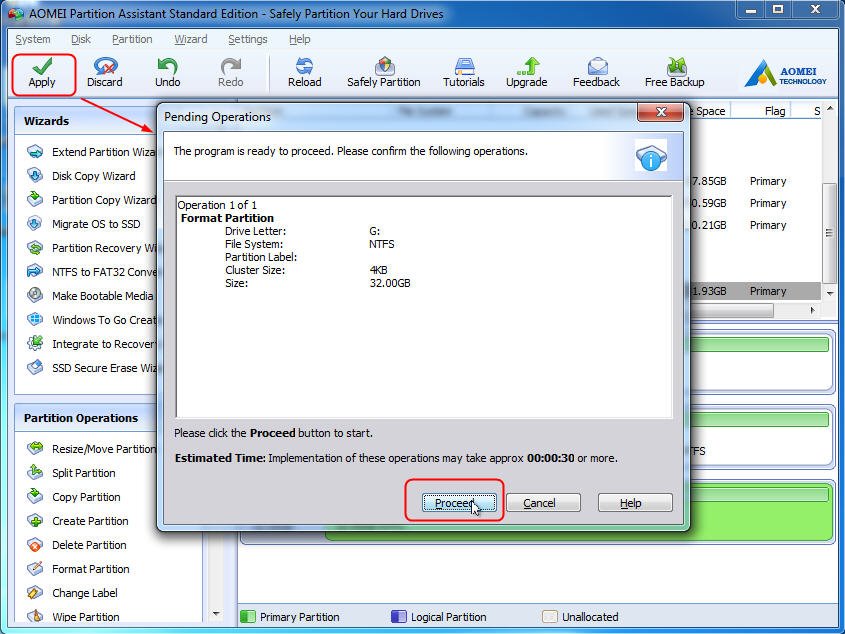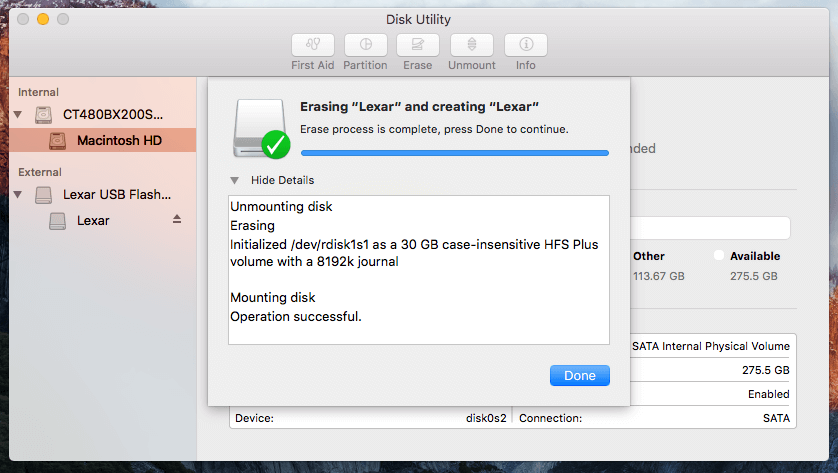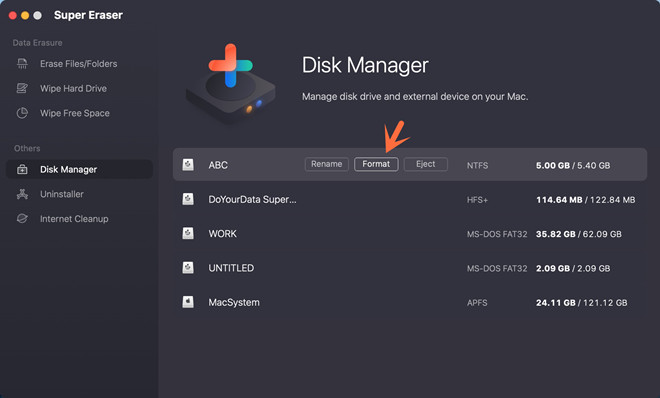Write to NTFS Drives on Mac with Paragon NTFS for Mac. Since your Mac does not have an official option to write data to NTFS drives, you are forced to use a third-party app to get the job done. If you do a quick Google search, you would come across many software claiming to help you with the Mac OS NTFS write task. To format a drive on a Mac, you’ll need the built-in Disk Utility application. Press Command+Space to open the Spotlight search dialog, type “Disk Utility”, and press “Enter” to launch the app. You can also open a Finder window, select “Applications” in the sidebar, and head to Utilities Disk Utility. How to format usb flash on mac or how to format hard disk on mac with best free usb drive formatting software download for mac or HP USB Disk Storage Format Tool mac edition download and free hard disk format tool mac to format usb flash drive fat32 on mac os or to create bootable usb or format usb in mac.
FATFile Allocation Table is a primary computer file system for various operating systems, mostly DOS, including DR-DOS, OpenDOS, freeDOS, MS-DOS, Microsoft Windows (up to and including Windows Me). FAT is also used for removable flash drives and memory cards.
File system is a method for storing and organizing computer files and the data they contain to make it easy to find and access them. The chart below shows in what FAT system a flash drive or memory card should be formatted.
| up to 2GB | 4GB-32GB | 64GB and above | |
| Default format for memory cards and flash drives | FAT16 | FAT32 | exFAT |

NTFS
NTFS is the standard file system of Windows NT, including its later versions Windows 2000, Windows XP, Windows Vista, Windows Server 2003, and Windows Server 2008, Windows 7 and Windows 8. NTFS is intended for use in Windows system drives (Hard Disk Drives and Solid State Drives).
NTFS has several improvements over FAT such as improved support for metadata and the use of advanced data structures for reliability, and disk space utilization, plus additional extensions such as security access control lists and file system journaling.
Notes for Flash Drives:
- Formatting the flash drive as NTFS will make it unwriteable on a Mac computer. Most Mac computers can read NTFS, but not write.
- NTFS is a journaled file system, this creates more read/write activities. Therefore, it MAY decrease life expectancy of your flash drive.
- Once the device is formatted as NTFS, you MUST use 'Safely Remove Hardware' to remove your device.
Most of the time formatting a flash drive is a very simple decision. There are only two situations where you should take consideration on what format to use. Here are the details:
Note: This article is focused towards Windows and Mac operating systems.
The file formats available for a flash drive are:
- FAT (also called FAT16)
- FAT32
- exFAT
- NTFS
- HFS (Mac only)
Flash drive manufacturers format a drive as either FAT or FAT32. Any device of 2GBs or smaller will be formatted as FAT and any USB over 2GBs will be formatted as FAT32.
These two formats are the best file system for removable drives like flash drives because they support the quick disconnect function and chances are very slim you will destroy the device or files if you unplug the USB without using the Eject function (in Windows) or Un-mount function (in Mac).
The one huge limitation with FAT and FAT32 is the single file size limitation. If a single file is larger than 2GBs you need to have the device as FAT32. If you have a single file bigger than 4GBs then you must use NTFS or exFAT. Typically these large files are either video files or restore image files (for restoring a computer operating system from a single image file).
So what if you have a file bigger than 4GBs? Well, you have to decide what is the lesser of two evils.
Here is the problem. If you format as NTFS it works great on all Windows machines, but Macs can only read from the device, they cannot write to it. There are some plugins to help the Mac deal with NTFS but our experience proves those add-ins to be unstable.
If you format it as exFAT all computers (Windows and Macs) will see the drive except for Windows XP.

So you must decide to accommodate the Windows XP users or accommodate the Mac users.
Format Flash Drive Mac Ntfs Fat32

Given that Mac computers are on the rise, your best option is to format the drive as exFAT. If there is a Windows XP user out there, they can download the plugin from Microsoft to allow an XP operating system to see the exFAT device without wanting to format it. Also keep in mind that XP is a 15 year old operating system (at the time of this post) and Microsoft no longer supports the OS.
As a closing note, the NTFS file system is not ideal for flash drives because it’s a dynamic file system. Meaning information can be writing to the flash drive at times in which you think the USB is idle. So in a situation where you disconnect the USB while there is a write change taking place to the file system, there is a good chance you will corrupt the data. Not good.
If you have more questions about formatting USB devices, please Contact Us.
Windows update for XP users to read exFAT USB devices HERE
Tags: exfat, usb